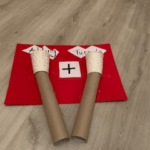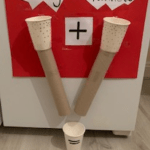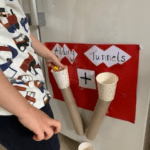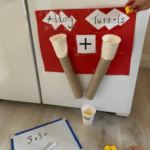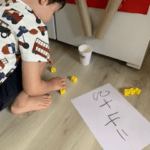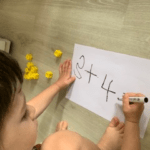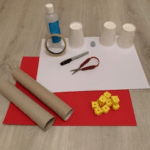For this activity, Jacob worked with the numbers 1-10. However, this can easily be adapted to use with lower numbers (1-5) or extended to use higher.
Using objects promotes the understanding of addition as it allows children to visualise the problem and solve it by physically moving the objects together.
This is a great game to leave up for your child to re-visit.
“Multilink cubes” are a great resource to support your child with Maths and are widely used in nurseries and schools. They are a visual, interactive way to teach a range of mathematical concepts to all ages. They snap together (developing fine motor skills and hand / eye co-ordination) and are easy for little hands to use.


